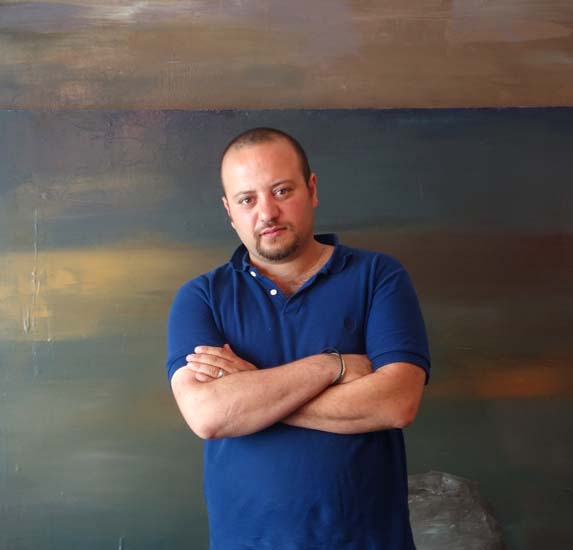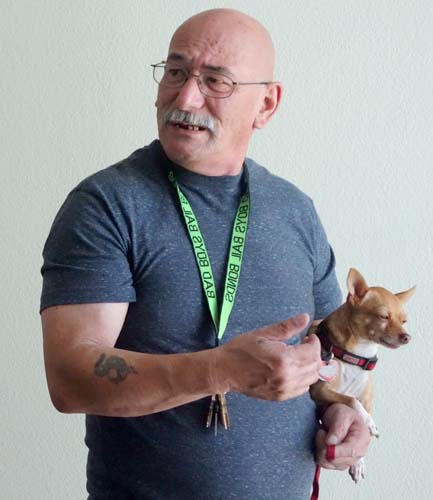Interviewsand Articles
Editors Introduction w&c #29: The Art of Living
by Richard Whittaker, Jan 5, 2015

Our theme, The Art of Living, is as difficult to pin down as anything else that comes under the heading of “art.” The phrase is a doorway into a landscape both out of focus and full of sublime intimation. We usually have just one Art of Living feature, but it was difficult to single out one individual for this issue. Each seemed beautifully suited to this phrase so laden with promise: the art of living. So we made it our theme for the entire issue.
Let’s start with our three interviews. The first several minutes of our conversation (a ServiceSpace Awakin Call) with artist Lily Yeh were not recorded, yet what remains is so remarkable I had no hesitation about publishing it. Every sentence conveys the results of this artist’s lifelong search for meaning. As Pavi Mehta, a participant on the Call, said, “Lily, the gems just keep pouring out of you.” That really sums it up. Lily Yeh is a voice in the wilderness.
A similar thing can be said of the Reverend Heng Sure, abbot of the Berkeley Buddhist Monastery. The particulars are different, but Bela Shah and Audrey Lin’s interview with monk Heng Sure, formerly Christopher Clowery, has that same light-emitting quality. As a young man, Clowery didn’t set out to become a Buddhist monk. Unquantifiable things happened, and someone inside was listening. That must be one clue to the art of living. It’s a gripping story.
In our third interview, Dr. Eduardo Cardona-Sanclemente talks about his own remarkable and ongoing journey. One thing is clear: there are no roadmaps for the art of living. Even with Buddhism’s right thought, right speech, right action and right livelihood the question is, but what are the particulars? In Dr. Cardona’s case, the particulars cover a lot of territory from Colombia to Paris to London to India to the San Francisco Bay Area—and back and forth in all directions. Not visible in all the traveling is an inner journey that stretches from science to the ancient medicine-knowledge of Ayurveda.
Text and image speak to us in different ways. Both have the potential to wake something in us, to bring light, as Lily Yeh would say—to touch us in ways we forget about. It’s what we hope for in each issue.
Our cover image comes from Oakland artist Sam Nejati. If one were to say that, for Nejati, the practice of painting is a search for the art of living, it would be true enough just to leave it at that.
I find myself calling it an old-fashioned approach. But, with a nod to Guy Noir, I’ve discovered that most artists are drawn to the deeper reaches of experience and its inevitable questions. What’s fashionable to talk about, or how it’s framed, may change, but the fundamental questions remain the same.
I met Jon Kerpel at an out-of-the-way event in the island community of Alameda, California. Kerpel is a New Yorker [Queens, SVA] who came to the Bay Area after a two-year sojourn at Paolo Soleri’s Arcosanti in Arizona. At one time he was a printmaker for Jerry Garcia. He’s prolific, and when I asked him what keeps him going, his immediate response was, “I have a mission. We need a new attitude toward the enviroment. That’s why I call a lot of my pieces temples.” The awareness of our profound interdependence on the web of life is not exactly an art, but perhaps waking up to it is.
San Jose’s venerable Tony May introduced me to artist Roberto Fierro. May’s discriminating eye has been honed by a lifetime of artmaking and teaching at San Jose State. It’s interesting that he noticed Fierro, who is self-taught. Together we visited Fierro at San Jose’s Art Ark, a publicly endowed housing project conceived as a support for artists. When Fierro retired as a machinist, he secured a small apartment there. He now devotes himself to painting seven days a week.
Looking at his work and getting acquainted with him was an unqualified pleasure.
Photographer John Upton sent me a photo that unexpectedly also involves David Ulrich. Both studied with Minor White, although many years apart. This is an uncanny story, and I’d be curious to know if any readers have a similar one.
I was wondering how I was going to fill the remaining few pages of the issue when I got a package in the mail. It was from Terrance Meyer, an artist passing through the Bay Area who I happened to meet 14 years ago in a coffee shop. [see issue #4] What Meyer sent, out of the blue, was the piece that completed this issue. It’s amazing how these things happen. Oh, and Indigo Animal’s increasingly mysterious stay in Rome continues.
Benvenuti al numero ventinovi. —RW
About the Author
Richard Whittaker is the founding editor of works & conversations and West Coast editor of Parabola magazine.
SUBSCRIBE NOW
TO OUR MONTHLY NEWSLETTER









Share Your Comments and Reflections on this Conversation: